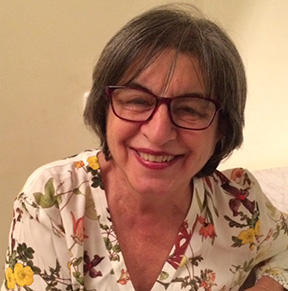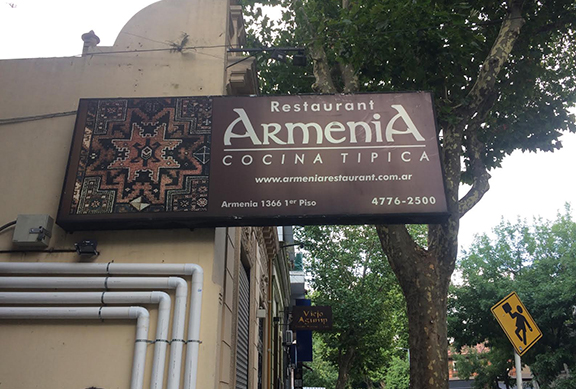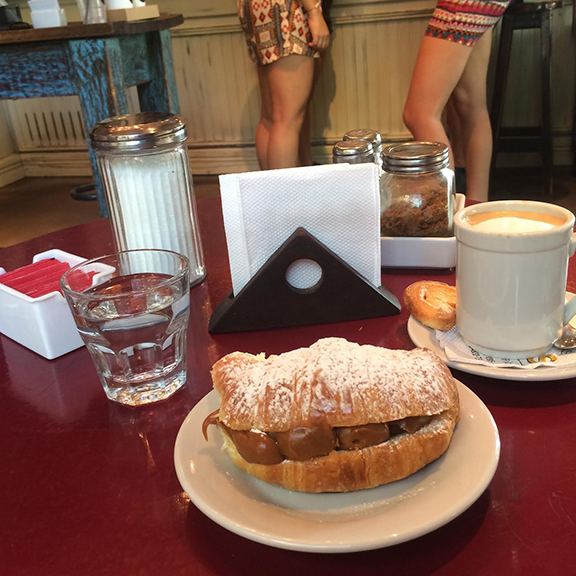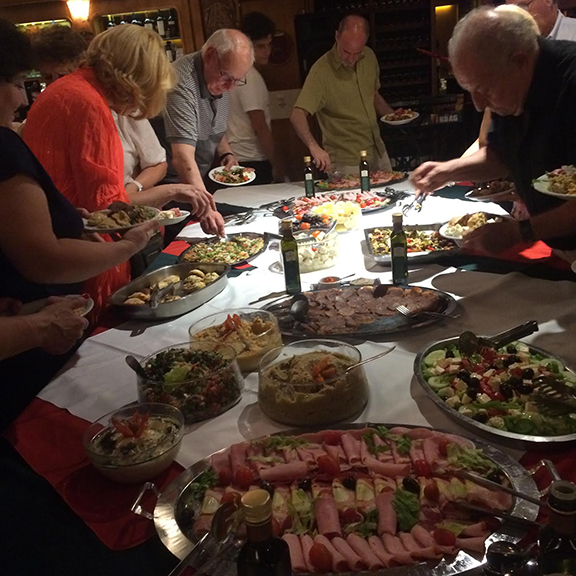BY CATHERINE YESAYAN
Last month I visited Buenos Aires to both explore a new city and write about the Armenian community. It’s so satisfying for me to be able to meet Armenians and bring their stories alive.
Buenos Aires—the very name in Spanish means “Fair Winds.” Even when the sun sizzles, a cool breeze can be felt in the shade. However, on that Saturday, December 31st, even the shade didn’t provide a relief from the merciless sun of the southern hemisphere.
Getting around in the city of “Fair Winds” is an easy affair. The subway, which dates back to 1913, is cheap and efficient. There are hundreds of bus lines that you can choose. In addition, taking a cab is a fairly affordable option and they are readily available on any street corner.
So on that steamy hot morning, when the temperature hovered in the 90s, I took a taxi to visit the former home of Evita Peron, who has gained a saint-like stature in Argentina.
After checking online to confirm that the house would be open on the last day of the year, I planned my visit. However, when I arrived, the museum was closed, so I asked the same taxi to take me back.
On the way there the driver had asked me where I was from. I was often asked that question by locals or as they’re called “Porteños,” meaning citizens of a port city. The very question amused me, because I knew when I answer “I’m Armenian,” they would know who Armenians are. This was especially true in the Palermo neighborhood, where Armenia Street is widely known.
I asked the driver to drop me off at the street fair in Palermo, just a few blocks away from where I was staying, thinking that I could bear to walk the few blocks home even in the scorching heat.
Buenos Aires is known for these lively street markets. Most neighborhoods have their own fairs or “ferias,” which bring out the flavor of local artists and also it’s a good way to blend with people.
In any city I travel, I try not to miss the opportunity to visit their outdoor market. Call me biased, but my most loved one is Yerevan’s “Vernisage” market, where you have it all—souvenirs, paintings, household items, jewelry and antiques.
There at Plaza Serrano in Palermo, I saw rows of stalls, filled with colorful handicrafts, fashion accessories and clothing. From all the pretty crafts, I chose a little hand-puppet for my granddaughter. I worried about having space to pack all my belongings for a flight back home, and had to use self-control to keep myself from buying more.
As I left the market and wandered through the quaint cobblestone and tree-lined streets I came across a café. It was the perfect time to snack on coffee and a “media luna” filled with “dulce de leche.” This national pastry of Argentina is a croissant-type roll filled with creamy chocolate similar to Nutella. Strolling along the streets of Palermo and enjoying the vibrant café culture is a pastime that calls me back.
Palermo, with its colorful designer boutiques, is a paradise for shoppers. I delighted in window shopping, which was like walking in a gallery and taking in the art.
I finally returned back to my room anxious to get ready for the New Year’s Eve celebration at an Armenian restaurant aptly named Armenia. Since I didn’t know many people attending, the owner, Pablo Kendikian, was kind enough to include me on a table with a nice Armenian family.
At around 9 o’clock, when outside was still light, I walked the short distance from where I was staying to the restaurant. Instead of high heels, I wore the comfortable flat shoes I had bought earlier that day during my leisure walk.
As I predicted, rather than being overly dressed and coiffed, the way we see guests at banquets held in Los Angeles, the guests at this event wore more casual outfits. My shoes fit right in!
Armenia restaurant is on the second floor of the Armenian Cultural Center on Armenia Street. I was one of the first to arrive. Guests started to drop in at around 10 pm. Dinner time in Argentina is very late.
The dinner was buffet style and the food was scrumptious. The first table held all sorts of Armenian appetizers, followed by a table filled with main courses. I loved their “sarma” or vegetarian dolma the best.
The entertainment consisted of a live singer accompanied by a keyboard player. The singer, who was amiable and funny, cracked many jokes and truly entertained us. The guests consisted of both Armenians and non-Armenians. We danced to many popular tunes from all over the world. I was amazed when the revelers sang-along with a Beatle’s song.
The family with whom I was supposed to sit arrived after 11 pm. They were warm and welcoming, as if we had known each other from before. They were a family of four; a husband and wife, their daughter Vika, who had brought her fourteen-year old son Aram who loved to dance. We all danced together—Armenian Shourj bar, American line dancing, and the Russian Kazachok. Aram was good at all of them.
Originally from Armenia, the family had moved to Argentina seven years ago. They told me they arrived late to the event because they live about 45 minutes away in San Cristobal neighborhood where there are almost no Armenians.
Vika’s mother Rouzan owns a hairdressing salon in San Cristobal. Mother and daughter work together and had to finish with their clients before heading to the restaurant.
Aram attends the Mkhitarian Armenian Catholic School, which is about 45 minutes away from their home. The school provides a shuttle bus for the students.
In searching for a school for Aram, Vika had looked into over six other Armenian schools in Buenos Aires and thought the Mkhitarian Catholic school was the best fit. And indeed it was. Aram likes his school and happy with his teachers and the curriculum.
Vika told me, “When we arrived seven years ago, there was no question that Aram was going to attend an Armenian school. We wanted him to have an Armenian upbringing.”
I liked them a lot and we became fast friends. They were a very active and a happy family. They seemed well adjusted with their new surroundings in a new country and they embraced me as their own.
New Year’s Eve is one of the rare occasions in Buenos Aires that it’s hard to get a taxi, so I was glad that I could walk home. I left the restaurant around 2 in the morning. I was happy to celebrate the New Year with local Armenians and get a glimpse into their traditions, which was much simpler than the way we welcome the New Year in L.A.
Source: Asbarez
Link: New Year’s Eve in Buenos Aires




